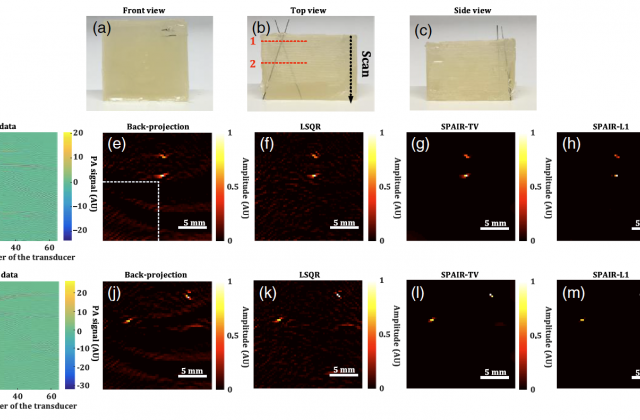
Citation
Ruibo Shang, Richard Archibald, Anne Gelb, Geoffrey P. Luke, "Sparsity-based photoacoustic image reconstruction with a linear array transducer and direct measurement of the forward model", Journal of Biomedical Optics, 24(3), 2018
Abstract
Photoacoustic (PA) imaging is an emerging imaging technique for many clinical applications. One of the challenges posed by clinical translation is that imaging systems often rely on a finite-aperture transducer rather than a full tomography system. This results in imaging artifacts arising from an underdetermined reconstruction of the initial pressure distribution (IPD). Furthermore, clinical applications often require deep imaging, resulting in a low-signal-to-noise ratio for the acquired signal because of strong light attenuation in tissue. Conventional approaches to reconstruct the IPD, such as back projection and time-reversal, do not adequately suppress the artifacts and noise. We propose a sparsity-based optimization approach that improves the reconstruction of IPD in PA imaging with a linear array ultrasound transducer. In simulation studies, the forward model matrix was measured from k-Wave simulations, and the approach was applied to reconstruct simulated point objects and the Shepp–Logan phantom. The results were compared with the conventional back projection, time-reversal approach, frequency-domain reconstruction, and the iterative least-squares approaches. In experimental studies, the forward model of our imaging system is directly measured by scanning a graphite point source through the imaging field of view. Experimental images of graphite inclusions in tissue-mimicking phantoms are reconstructed and compared with the back projection and iterative least-squares approaches. Overall these results show that our proposed optimization approach can leverage the sparsity of the PA images to improve the reconstruction of the IPD and outperform the existing popular reconstruction approaches.
Read PublicationLast Updated: May 28, 2020 - 4:05 pm